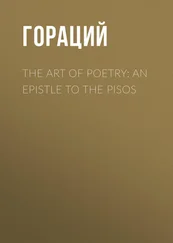Charles Gore - St. Paul's Epistle to the Ephesians - A Practical Exposition
Здесь есть возможность читать онлайн «Charles Gore - St. Paul's Epistle to the Ephesians - A Practical Exposition» — ознакомительный отрывок электронной книги совершенно бесплатно, а после прочтения отрывка купить полную версию. В некоторых случаях можно слушать аудио, скачать через торрент в формате fb2 и присутствует краткое содержание. Издательство: Иностранный паблик, Жанр: foreign_religion, foreign_antique, foreign_prose, на английском языке. Описание произведения, (предисловие) а так же отзывы посетителей доступны на портале библиотеки ЛибКат.
- Название:St. Paul's Epistle to the Ephesians: A Practical Exposition
- Автор:
- Издательство:Иностранный паблик
- Жанр:
- Год:неизвестен
- ISBN:нет данных
- Рейтинг книги:4 / 5. Голосов: 1
-
Избранное:Добавить в избранное
- Отзывы:
-
Ваша оценка:
- 80
- 1
- 2
- 3
- 4
- 5
St. Paul's Epistle to the Ephesians: A Practical Exposition: краткое содержание, описание и аннотация
Предлагаем к чтению аннотацию, описание, краткое содержание или предисловие (зависит от того, что написал сам автор книги «St. Paul's Epistle to the Ephesians: A Practical Exposition»). Если вы не нашли необходимую информацию о книге — напишите в комментариях, мы постараемся отыскать её.
St. Paul's Epistle to the Ephesians: A Practical Exposition — читать онлайн ознакомительный отрывок
Ниже представлен текст книги, разбитый по страницам. Система сохранения места последней прочитанной страницы, позволяет с удобством читать онлайн бесплатно книгу «St. Paul's Epistle to the Ephesians: A Practical Exposition», без необходимости каждый раз заново искать на чём Вы остановились. Поставьте закладку, и сможете в любой момент перейти на страницу, на которой закончили чтение.
Интервал:
Закладка:
Among Greek cities it also occupied a not inconspicuous place in the history of art, and at an earlier period of philosophy also. Here was one of the chief homes of the Homeric tradition; hence in the person of Callinus the Greek elegy is reputed to have had its origin, and in the person of Hipponax the satire. It was the home of Heracleitus, one of the greatest of the early philosophers, and of Apelles and Parrhasius, the masters of painting[ 36 36 Strabo. xiv. 1, 25.
].
And the greatest artists in sculpture – Phidias and Polycletus, Scopas and Praxiteles – had adorned with their works the temple of Artemis, which, in itself one of the wonders of the world, the masterpiece of Ionic architecture, became also, like some great Christian cathedral, a very museum of sculpture and painting.
If Greek artists built and decorated the temple of Artemis, they attempted no doubt to represent the goddess under the form which her Greek name suggested, the beautiful huntress-goddess; but the Greeks never in fact succeeded in affecting the thoroughly Asiatic and oriental character of a worship which had nothing Greek about it except the name. The interest of Ephesus as an Asiatic city centred about that ancient worship which had its home in the plain below the Greek settlement. It was there before the Greeks came, it held its own throughout and in spite of all Greek and Roman influences; all through the history of Ephesus it gave its main character to the city – the noted home of superstition and sorcery.
The Artemis of Ephesus was, as Jerome remarks[ 37 37 Migne, P. L. xxvi. 441.
], not the huntress-goddess with her bow, but the many-breasted symbol of the productive and nutritive powers of nature, the mother of all life, free and untamed like the wild beasts who accompanied her. The grotesque and archaic idol believed to have fallen down from heaven was a stiff, erect mummy covered with many breasts and symbols of wild beasts. Her worship was organized by a hierarchy of eunuch priests – called by a Persian name Megabyzi – and 'consecrated' virgins. It was associated, like other worships of the same divinity called indifferently Artemis or Cybele or Ma, with ideals of life which from the point of view of any fixed moral order, Roman or Greek no less than Jewish or Christian, was lawless and immoral.
It is very well known how the Asiatic nature-worships flooded the Roman empire, and even at Rome itself became by far more popular than the traditional state religion. And among these Asiatic worships none was more popular than the worship of Artemis of Ephesus, whose temple was the wonder of the world, and who not only was worshipped publicly at Ephesus, but was the object of a cult both public and private in widely-separated parts of the empire. Such a temple and such a worship would naturally collect a base and corrupt population; but what would in any case have been bad was rendered worse by the fact that the area round the temple was an asylum of refuge from the law, and that, as the area of 'sanctuary' was extended at different times, the collection of criminals became greater and greater. It had reached a point where it threatened the safety of the city, and not long before St. Paul's time the Emperor Augustus had found it necessary to curtail the area. The history of our own Westminster is enough to assure us that a religious asylum brings social degradation in its train.
Such was the commercial and religious importance of the beautiful, wealthy, effeminate, superstitious, and most immoral city which became for three years the centre of St. Paul's ministry. On his second missionary journey St. Paul was making his way to Asia, and no doubt to Ephesus, when he with his companions were hindered by the Holy Ghost and turned across the Hellespont to Macedonia[ 38 38 Acts xvi. 6-10.
]. On his return to Syria, he could not be satisfied without at least setting foot in Ephesus and making a beginning of preaching there in the synagogue[ 39 39 Acts xviii. 19.
]; but he was hastening back to Jerusalem, and, with a promise of return, left his work there to Priscilla and Aquila. On his third missionary journey Ephesus was the centre of his prolonged work. It was accordingly the only city of the first rank which, so far as any trustworthy evidence goes, had as the founder of its Church in the strictest sense – that is, as the first gatherer of converts as well as organizer of institutions – either St. Paul or any other apostle[ 40 40 Hort, Prolegomena , p. 83.
].
St. Paul's first activity on arriving at Ephesus illustrates the stress he laid on the gift of the Holy Ghost as the central characteristic of Christianity. He was brought in contact with the twelve imperfect disciples who had been baptized only with John the Baptist's baptism, and had not so much as heard whether the Holy Ghost was given. St. Paul baptized them anew with Christian baptism, and bestowed upon them the gift of the Holy Ghost by the laying on of his hands[ 41 41 Acts xix. 1-7.
]. Then it is recorded how he began his preaching as usual with the Jews in the synagogue. The Jews of Asia Minor were regarded by the Jews of Jerusalem as corrupted and Hellenized[ 42 42 Ramsay, l. c. p. 143.
]. But at any rate they exhibited the same antagonism to the preaching of Christianity as their stricter brethren. Thus St. Paul, when he had given them their chance, abandoned their synagogue and established himself in the lecture-room of Tyrannus, where he taught for two years and more[ 43 43 'From the fifth to the tenth hour' (11 a.m. to 4 p.m.), an early addition to the text of the Acts tells us; i. e. after work hours, when the school would naturally be vacant and St. Paul would have finished his manual labour at tent-making. Ramsay, l. c. p. 276.
]. And this became the centre of an evangelization which, even if St. Paul himself did not visit other Asiatic towns, yet spread by the agency of his companions over the whole of the Roman province of Asia – to the churches of the Lycus, Colossae, Laodicea, Hierapolis, and probably to the rest of the 'seven churches' to which St. John wrote in his Apocalypse.
Ephesus was full of superstitions of all sorts as would be expected, and St. Paul's miracles were such as would not unnaturally have led the magicians to regard him as a greater master in their own craft. So among others the Jewish chief priest Sceva's seven sons began to use the central name of Paul's preaching as a new and most efficient formula for exorcism. 'We adjure thee by Jesus whom Paul preaches.' But it is frequently noticeable that St. Paul refused to allow himself to use superstition as a handmaid of religion. The providential disaster which befell these exorcists gave St. Paul an opportunity of striking an effective blow where it was most needed against exorcism and magic. The Christian converts came and confessed their participation in the black arts, and burnt their books of incantations, in spite of their value. The whole transaction must have impressed vividly in the minds of the Ephesians the contrast between Christianity and superstition.
St. Paul had already encountered opposition as well as success at Ephesus, for when, writing from Ephesus, he speaks to the Corinthians[ 44 44 1 Cor. xv. 32.
] of having 'fought with beasts' there, the reference is probably to what had befallen him in the earlier part of his residence through the plots of the Jews; that long Epistle to the Corinthians can hardly have been written after the famous tumult recorded in the Acts. But that tumult, raised by the manufacturers of the silver shrines of Artemis, was of course the most important persecution which befell St. Paul at Ephesus. The narrative of it[ 45 45 Acts xix. 23 ff.
] is exceedingly instructive. We notice the friendliness of the Asiarchs, i.e. the presidents of the provincial 'union' and priests of the imperial worship, and the opinion of the town clerk, that St. Paul must be acquitted of any insults to the religious beliefs of the Ephesians[ 46 46 Prof. Ramsay asserts that instead of 'robbers of temples' (Acts xix. 37), we should translate 'disloyal to the established government.' l. c. p. 282. But the word is used in the former sense in special connexion with Ephesus by Strabo, xiv. 1, 22, and Pseudo-Heracleitus, Ep. 7, p. 64 (Bernays).
]. Christianity had not, it appears, yet excited the antipathy of the religious or civil authorities of the Empire, but it had begun to threaten the pockets of those who were concerned in supplying the needs of the worshippers who thronged to the great temple at Ephesus. We need not inquire exactly how the little silver shrines of Artemis were used; but they were much sought after, and their production gave occupation to an important trade. The trade was threatened by the spread of Christianity. The philosophers despised indeed the idolatrous rites, but they despised also the people who practised them, and had no hope or idea of converting them[ 47 47 See app. note B , p. 253, on the contemporary 'letters of Heracleitus.'
]. St. Paul was the first teacher at Ephesus who touched the fears of the idol makers by bringing a pure religion to the hearts of the ordinary people. Hence the tumult against the teachers of the new religion, raised not by the civil or religious authorities of Ephesus, but simply by the trade interest.
Интервал:
Закладка:
Похожие книги на «St. Paul's Epistle to the Ephesians: A Practical Exposition»
Представляем Вашему вниманию похожие книги на «St. Paul's Epistle to the Ephesians: A Practical Exposition» списком для выбора. Мы отобрали схожую по названию и смыслу литературу в надежде предоставить читателям больше вариантов отыскать новые, интересные, ещё непрочитанные произведения.
Обсуждение, отзывы о книге «St. Paul's Epistle to the Ephesians: A Practical Exposition» и просто собственные мнения читателей. Оставьте ваши комментарии, напишите, что Вы думаете о произведении, его смысле или главных героях. Укажите что конкретно понравилось, а что нет, и почему Вы так считаете.













детально рассмотрела важный вопрос и предоставила читателям полезные
знания. Очень захватывающая познавательная и увлекательная для меня,
как автора статей на тему онлайн-игр на данной платформе https://1win-russia.net/ , однако это далеко не единственное из моих интересов!
В частности меня заинтересовал
научный метод к рассмотрению
этой проблемы и ясное изложение главных моментов.
Статья очевидно осуществила значительную работу по сбору и анализе информации, что делает её ценным ресурсом знаний.
Отличное выполнение!